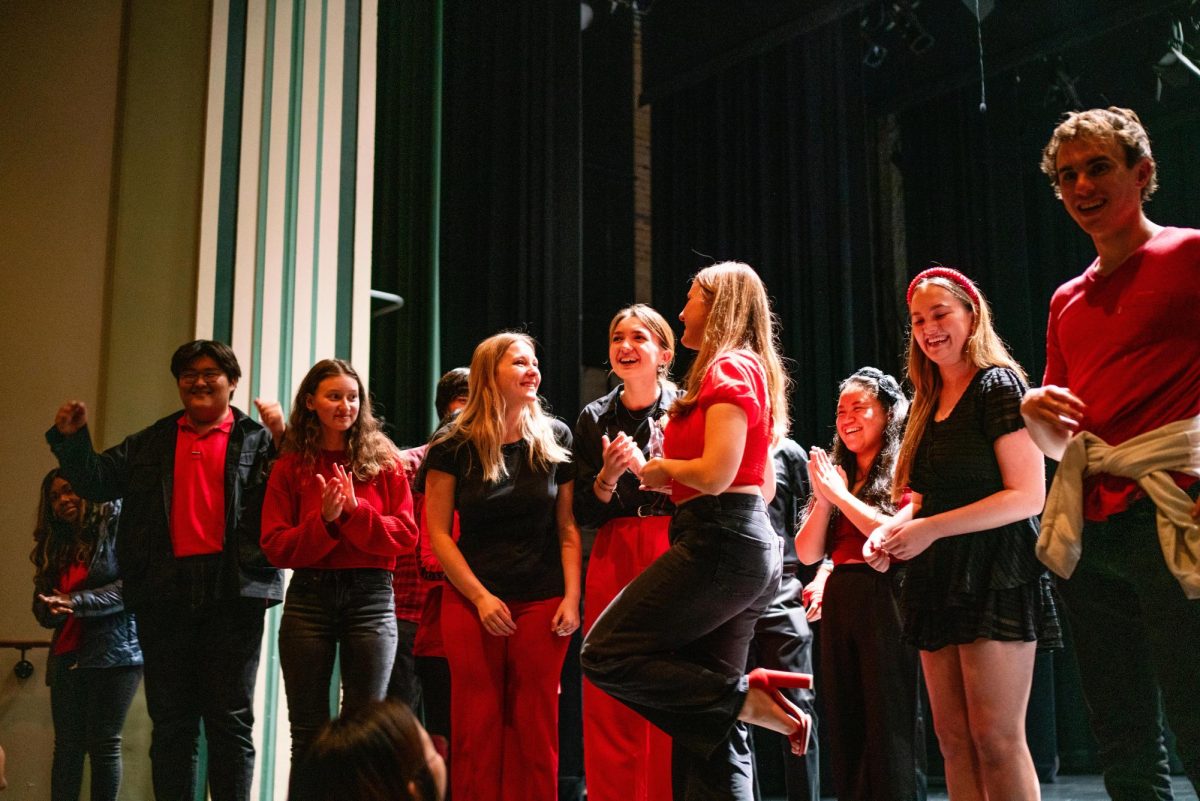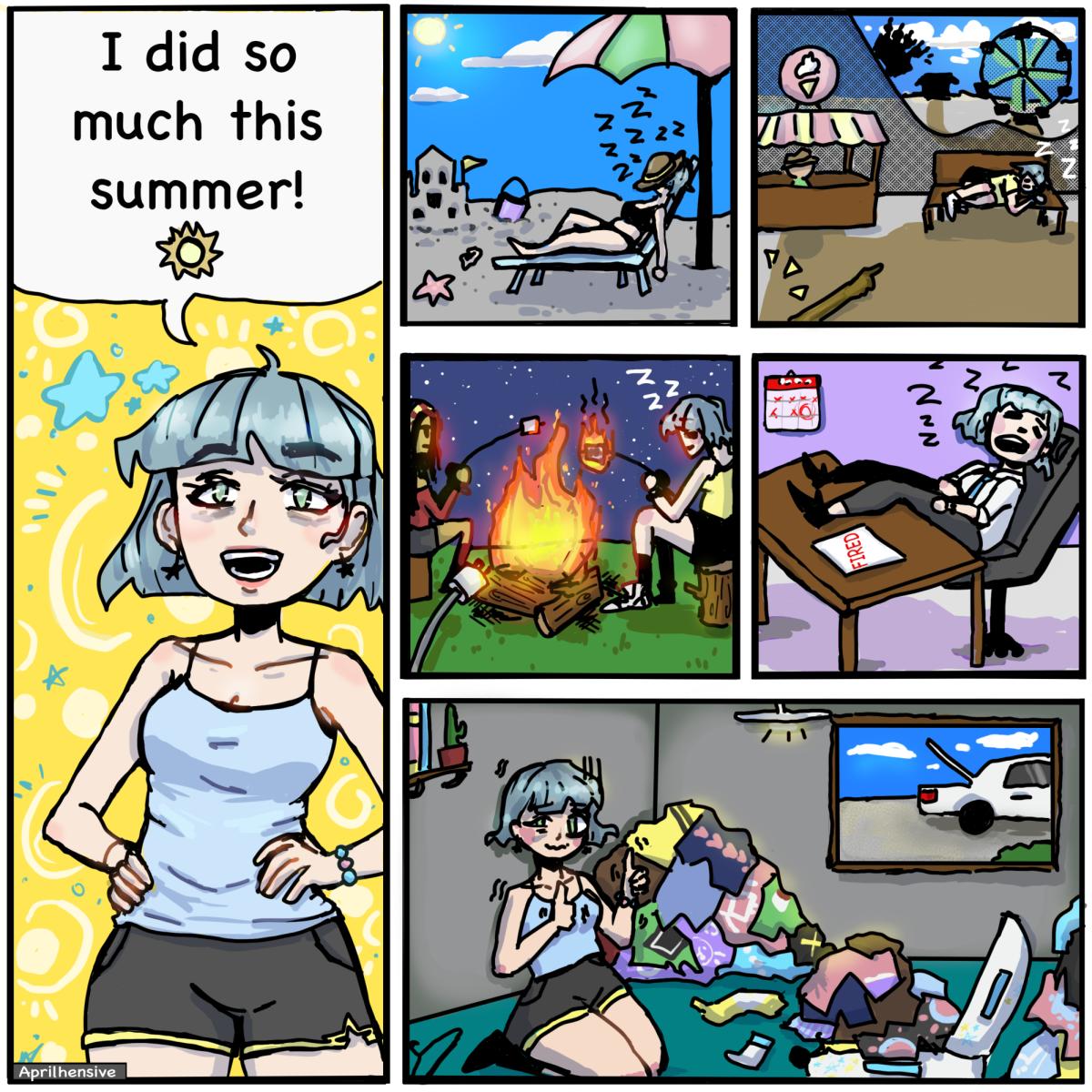Beginning a successful career fresh out of college is daunting enough for any student amid a recession. For someone wanting to become a professional artist, it might seem impossible.
Hiring freezes throughout the job market — with added strain within competitive fields — seem to keep the “starving artist” stereotype in the forefront of the profession’s reputation. It now trickles down to education. A report by the National Center for Education Statistics revealed that from 1999-2000 to 2009-10, publics schools have seen a reduction in the arts education offered to students, with economically disadvantaged students having suffered the worst of a 20 percent reduction in arts education offerings.
Yet, the profession survives. RJ Karlstrom, a local Champaign professional painter, professed that 2012 was one of his most profitable years, albeit after over 10 years of professional experience. After graduating with a degree in painting from Eastern Illinois University in 1973, Karlstrom moved to Chicago where he worked for production companies while pursuing his passion for painting on the side.
“The hardest part is doing it straight out of school because you (have) to develop a history or at least a style,” he said. “(You have to) have enough pieces to really have a cohesive style that has some longevity.”
Karlstrom developed his style while living in Chicago until the early 2000s, when he moved back to his hometown of Champaign to take on painting full-time and act as a caregiver for his father. He admitted he wasn’t able to make much money for the first two or three years and had to work construction and other jobs to make a living. It’s a money struggle he knows he might have to face in the future, but sees it as the trade-off for his passion.
Get The Daily Illini in your inbox!
Based on his experience, Karlstrom doesn’t believe his education fully prepared him for the realities of the job.
“They don’t really teach the realities of living in society as an artist, whether its marketing your work or the business aspect of it,” he said. “I kind of had to learn all of that after school.”
Although art education may have faced cutbacks in the last decade, the College of Fine and Applied Arts (FAA) continues to improve and strengthen its curriculum and resources to better prepare students for the tough economic climate awaiting them. Michele Plante, career service coordinator for the College of FAA, explained how the college uses multiple resources to prepare students for the dynamic challenges of the professional art world.
All seven units of the school expand their curriculum beyond the arts’ specific skills to help students learn how to write artist statements, press releases and graduate school applications, as well as additional skills in portfolio design, website structure and social networking.
“I bring the students job ads and help them prepare materials and grant applications; I harass them to enter the Boneyard Arts Festival and apply for Urbana Public Arts Grants,” Plante explained, listing examples of some of the gateway opportunities available to students.
Dori Rogers, sophomore in FAA, feels confident that the college is preparing her for a professional career. As a double major in art education and photography, she hopes she can one day become part of the growing art education while pursuing photography on the side as a portrait or wedding photographer. She feels the college is appropriately addressing the changes taking place in the field.
Plante and 40 North have also collaborated to create the Independents Arts Lecture Series, which addresses topics such as marketing oneself as an artist in the 21st century. The organization Art + Design opened Figure One, its own gallery in downtown Champaign where students and visiting exhibitors can display work.
Plante also said art students especially need to enrich their arts and arts administration resumes by getting involved with the Krannert Center for the Performing Arts, The Urbana Arts Commission, DoCha and similar organizations. Plante is now putting together a Professional Mentor Program, starting with Industrial and Graphic Design seniors, to connect students with professionals in the field. She hopes to eventually expand the program to all majors.
“Too many people are intimidated by a negative stereotype and so choose to just spend all their time in the studio,” Plante said. “Then they come to me senior year or after graduation with nothing on their resume and that’s extremely hard to work with, since they are competing with other arts students who have been exhibiting, entering competitions and selling work the entire four years.”
Arts graduates are now equipped with a broader foundation that can be used to launch careers both in and outside of the arts. According to a 2011 report by the Strategic National Arts Alumni Project, 46 percent of art graduates pursued degrees outside the arts with 67 percent continuing within the arts.
Of the important skills and competencies reported in their profession or work life, current professional artists’ work required more creativity, listening and revising, project management and networking skills above artistic skill.
However, not all students feel education is doing all it can. Bekah Hakimian, sophomore in FAA, believes many of her peers do not have enough exposure to the real world and thinks there should be more of an integration of other areas of study outside the required general education classes. As a graphic design major, she hopes to become a medical illustrator after graduate school to combine her love of medicine and art.
Karlstrom said most of the skills he uses in his profession he learned post-school. Education can only go so far before artists must learn the professional environment themselves: figuring out which public venues they like to show their pieces at, creating a body of work they can be proud of and seeking out the guidance of mentors in the professional world. The business is still dictated by word of mouth, Karlstrom said, so it’s never too early to start networking. College is a good place to start.
“(The College of FAA knows, and has) known for many, many years that art is a business,” Plante said. “But the good news is that entrepreneurship requires creativity, and the arts has that in spades.
Sarah can be reached at [email protected].








